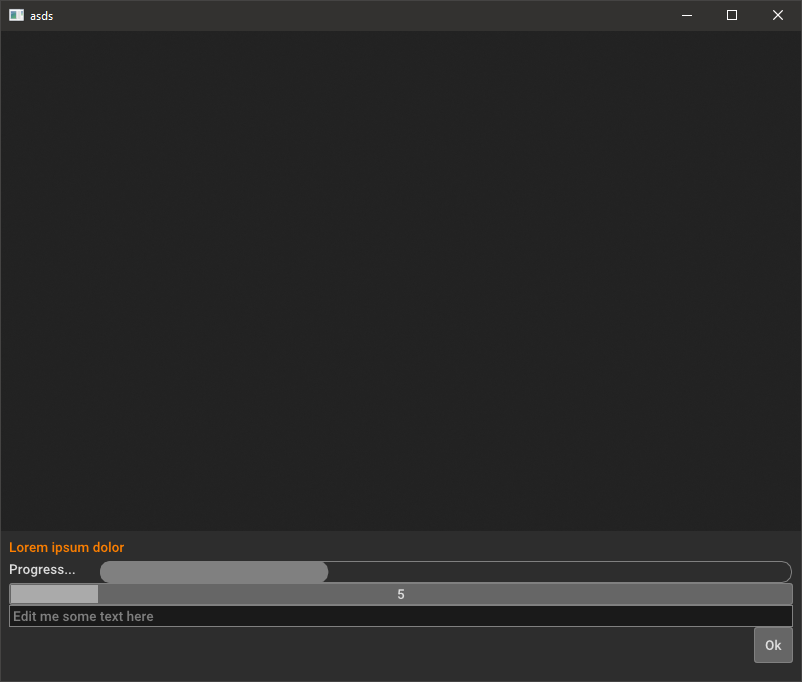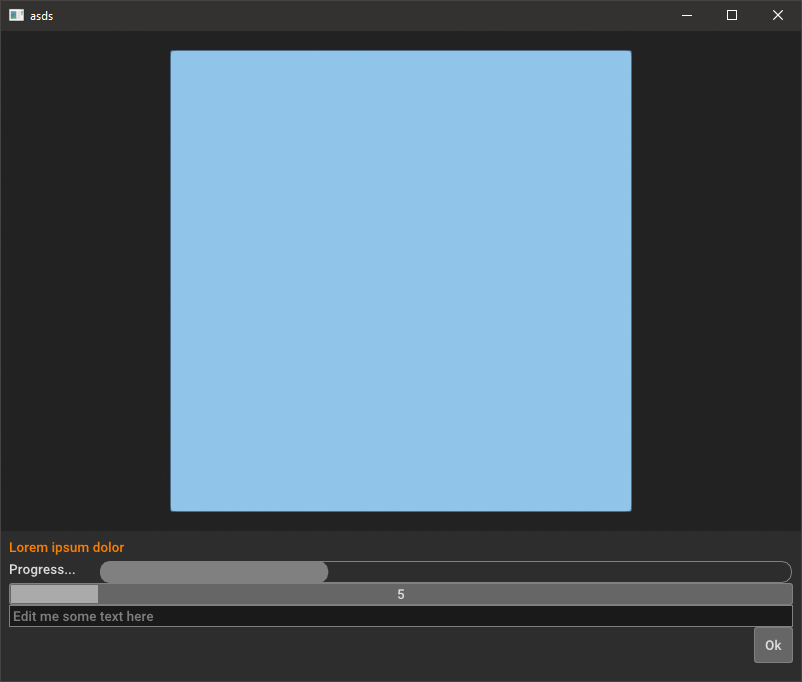Open3D
 Open3D copied to clipboard
Open3D copied to clipboard
SceneWidget() not updating until zoom in/out
trafficstars
Checklist
- [x] I have searched for similar issues.
- [ ] For Python issues, I have tested with the [latest development wheel]
- [x] I have checked the release documentation and the latest documentation (for master branch).
The Issue
When launching the application, SceneWidget() does not draw objects in the scene unless you manually zoom in or out on the scene...
At start:

After zooming in and out once it is properly displayed:

I tried to force_redraw() after adding the object but still have the same problem.
To Reproduce the Issue
import open3d as o3d
import numpy as np
import open3d.visualization.gui as gui
import open3d.visualization.rendering as rendering
class SeamSelector:
def __init__(self):
self.window = gui.Application.instance.create_window("asds", 800, 650)
w = self.window
em = w.theme.font_size
_y = 500
# Create renderer
self.widget3d = gui.SceneWidget()
self.widget3d.scene = rendering.Open3DScene(w.renderer)
self.widget3d.set_view_controls(gui.SceneWidget.Controls.ROTATE_CAMERA)
self.widget3d.scene.set_background([0.4, 0.4, 0.4, 1])
bbox = o3d.geometry.AxisAlignedBoundingBox()
self.widget3d.setup_camera(10.0, bbox, np.array([0.0,0.0,0.0]))
self.widget3d.scene.camera.look_at([0, 0, 0], [0, 0, 19000], [0, 0, 1])
self.widget3d.frame = gui.Rect(0, 0,
w.content_rect.width, _y)
# Create layout
layout = gui.Vert(0, gui.Margins(0.5 * em, 0.5 * em, 0.5 * em,
0.5 * em))
layout.frame = gui.Rect(0, _y,
w.content_rect.width, w.content_rect.height)
#layout.add_child(self.widget3d)
# Label
self._label = gui.Label("Lorem ipsum dolor")
self._label.text_color = gui.Color(1.0, 0.5, 0.0)
layout.add_child(self._label)
# Create a progress bar. It ranges from 0.0 to 1.0.
self._progress = gui.ProgressBar()
self._progress.value = 0.25 # 25% complete
self._progress.value = self._progress.value + 0.08 # 0.25 + 0.08 = 33%
prog_layout = gui.Horiz(em)
prog_layout.add_child(gui.Label("Progress..."))
prog_layout.add_child(self._progress)
layout.add_child(prog_layout)
# Create a slider. It acts very similar to NumberEdit except that the
# user moves a slider and cannot type the number.
slider = gui.Slider(gui.Slider.INT)
slider.set_limits(5, 13)
slider.set_on_value_changed(self._on_slider)
layout.add_child(slider)
# Create a text editor. The placeholder text (if not empty) will be
# displayed when there is no text, as concise help, or visible tooltip.
tedit = gui.TextEdit()
tedit.placeholder_text = "Edit me some text here"
# on_text_changed fires whenever the user changes the text (but not if
# the text_value property is assigned to).
tedit.set_on_text_changed(self._on_text_changed)
# on_value_changed fires whenever the user signals that they are finished
# editing the text, either by pressing return or by clicking outside of
# the text editor, thus losing text focus.
tedit.set_on_value_changed(self._on_value_changed)
layout.add_child(tedit)
# Quit button. (Typically this is a menu item)
button_layout = gui.Horiz()
ok_button = gui.Button("Ok")
ok_button.set_on_clicked(self._on_ok)
button_layout.add_stretch()
button_layout.add_child(ok_button)
layout.add_child(button_layout)
# We're done, set the window's layout
w.add_child(self.widget3d)
w.add_child(layout)
self.construct()
def construct(self):
# Now add a base beneath the object
mesh_box = o3d.geometry.TriangleMesh.create_box(width=3000.0,
height=3000.0,
depth=1.0)
mesh_box.compute_vertex_normals()
mesh_box.translate(np.array([-1500,-1500,-3.0]))
mesh_box.paint_uniform_color([0.3, 0.6, 1])
mat = rendering.MaterialRecord()
mat.shader = "defaultLit"
self.widget3d.scene.add_geometry('sds', mesh_box, mat)
def _on_slider(self, new_val):
self._progress.value = new_val / 20.0
def _on_text_changed(self, new_text):
print("edit:", new_text)
def _on_value_changed(self, new_text):
print("value:", new_text)
def _on_ok(self):
gui.Application.instance.quit()
def main():
gui.Application.instance.initialize()
SeamSelector()
gui.Application.instance.run()
if __name__ == "__main__":
main()